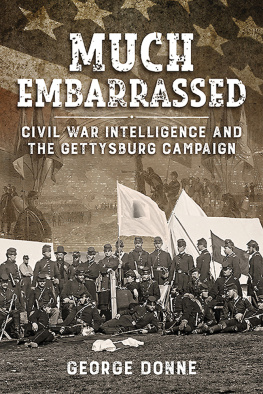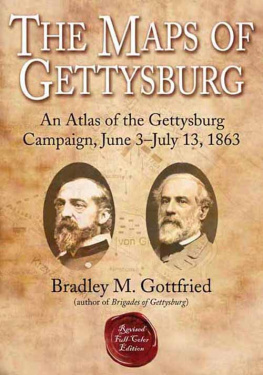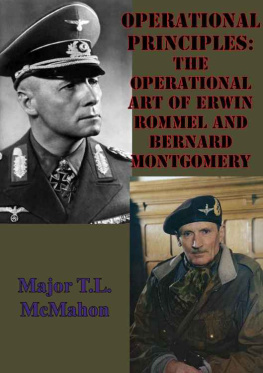
This edition is published by PICKLE PARTNERS PUBLISHINGwww.picklepartnerspublishing.com
To join our mailing list for new titles or for issues with our books picklepublishing@gmail.com
Or on Facebook
Text originally published in 2001 under the same title.
Pickle Partners Publishing 2014, all rights reserved. No part of this publication may be reproduced, stored in a retrieval system or transmitted by any means, electrical, mechanical or otherwise without the written permission of the copyright holder.
Publishers Note
Although in most cases we have retained the Authors original spelling and grammar to authentically reproduce the work of the Author and the original intent of such material, some additional notes and clarifications have been added for the modern readers benefit.
We have also made every effort to include all maps and illustrations of the original edition the limitations of formatting do not allow of including larger maps, we will upload as many of these maps as possible.
THE GETTYSBURG CAMPAIGN: BIRTH OF THE OPERATIONAL ART?
By
Major Kevin B. Marcus, United States Army
TABLE OF CONTENTS
Contents
REQUEST FROM THE PUBLISHER
Abstract
While hundreds of volumes exist on the Gettysburg Campaign, most examine the battles tactical framework and focus on the activities of brigades and regiments. However, of more interest to the serving military professional may be an analysis of the degree to which the Confederacys design and execution exemplify attributes of what is now known as the operational art. This monograph provides just such a study.
The importance of the operational level of war and its supporting art cannot be overstated. Only with a recognition of this level between those of strategy and tactics and a mastery of its art can commanders have the appropriate frame of reference to link strategic goals assigned by national authorities with the tactical activities of their subordinate commanders. Although U.S. Army doctrine may have been late in formally recognizing the existence and significance of the operational level of war and its supporting art, it may have appeared very early in our military history. Indeed, without being named as such, the concept may have been placed into effect as early as the American Civil War.
Providing a brief background of the Campaigns plan and events, these same are then analyzed against seven characteristics of the operational level of war. Among these characteristics are the degree to which the Confederacys plan for the campaign (and its subsequent execution) evidenced operational vision, planned and executed distributed operations in the framework of a distributed campaign, and was supported and enabled by continuous logistics and instantaneous command and control.
Application of the criteria to the planning and execution of the Gettysburg Campaign reveals that the Gettysburg Campaign does not provide an earlier birth date of the operational art. The following issues prove most significant. First, while Lees operational vision resulted in a distributed operation, it was not part of a distributed campaign. While Lee could (and did) plan truly distributed operations, he did not have the authority to order other Army Commanders to design and conduct other such operations. Therefore, the Gettysburg operation was not combined with other operations to result in a distributed campaign. Next, within the operation itself, systemic failures in logistics and command and control led to an inability to sustain and coordinate the operation and limit the durability of the Army of Northern Virginias corps. These shortcomings (combined with others addressed at a later point) lead to the conclusion that the Army of Northern Virginia executed a major operation (vice campaign) that was modeled on the new possibilities of distributed maneuver but was not supported by the critical enablers of advanced communications and transportation technologies.
Introduction
In what many consider the pre-eminent history of the Gettysburg Campaign author Edwin B. Coddington notes that as early as 1900 at least one historian had suggested that another history of Gettysburg may seem superfluous and presumptuous. {1} While Coddington then goes on to explain why his book can in no way be considered either, the question remains valid. Indeed, in the one hundred years since that comment, hundreds of additional books have emerged to explain, justify or memorialize the campaign and its resultant battles. So, then, what would make a monograph on any facet of the campaign any less superfluous or presumptuous
Some aspects of the Gettysburg Campaign have not been adequately addressed. One such aspect is the degree to which the Confederacys design and execution exemplify attributes of what is now known as the operational art. While discussed by students of military theory and resident in other nations military doctrine since the early twentieth century, the concept did not appear in U.S. Army doctrine until the publication of the 1986 version of its keystone operational doctrine FM 100-5 Operations . While the Army may have been late to recognize the importance of providing an emphasis on the concept of operations and the operational art; the concepts significance cannot be overstated. As a successor of the 1986 version states, only the successful application of the operational art allows the use of military forces to achieve strategic goals through the design, organization, integration and conduct of theatre strategies, campaigns, major operations, and battles. {2}
Although U.S. Army doctrine may have been late in formally recognizing the existence and significance of the operational level of war and its supporting art, it may have appeared very early in our military history. Indeed, without being named as such, the concept may have been placed into effect as early as the American Civil War. One author notes if one were to hazard a precise date as to the birth of the operational art, that date would be April 4, 1864. {3} This work then describes how Lieutenant General Grants plan for that years major operations represents the true beginnings of the application of the operational art. However, could an earlier example be found? To put a finer point on it: does the Confederate Armys design and execution of the Gettysburg Campaign represent successful application of the operational art?
There are indeed enough books written on the Gettysburg Campaign and battle to fill a good-sized library. Some focus on the strategy of the campaign; most focus on the tactical activities of corps, divisions, brigades and regiments. Few analyze the campaign in the framework of operational art as the Army currently understands it. Such an analysis is worthwhile and necessary. While adding a unique campaign analysis to the body of historical knowledge, it can also provide an illustrative, easily accessible example of how attributes of operational design can allow the coherent application of the operational art.
To provide a base for subsequent analysis this monograph begins with an overview of campaign design and execution. While hardly comprehensive, this review facilitates subsequent analysis by establishing what the campaign was intended to achieve and, during both the approach and subsequent three days of battle, what actually occurred.
Given an understanding of the campaign itself, the monograph follows with an overview of how the U.S. Army currently views the operational level of war and its supporting art. A discussion of its classical (e.g. Jominian) and modern (e.g. Soviet theorists) roots and influences support this current definition. These bodies of thought, in turn, provide a basis for those characteristics of operational art as described in Vulcans Anvil: The American Civil War and the Emergence of the Operational Art . The description and examination of these characteristics provide evaluation criteria for subsequent analysis.









